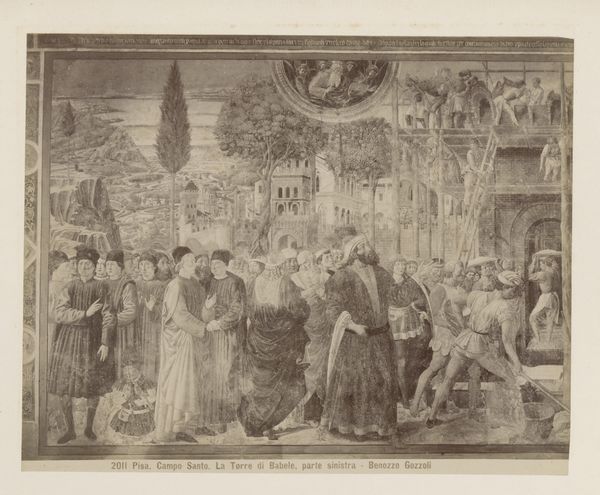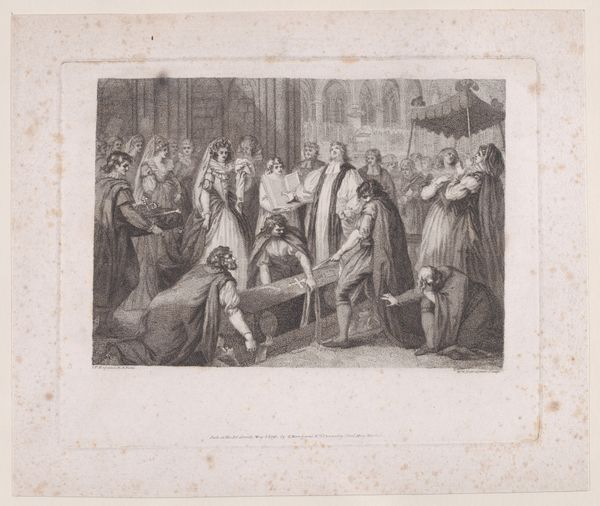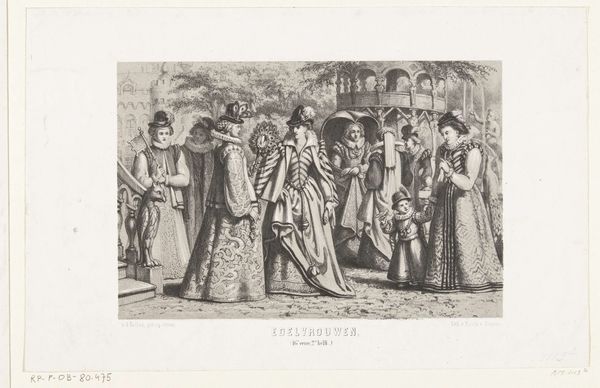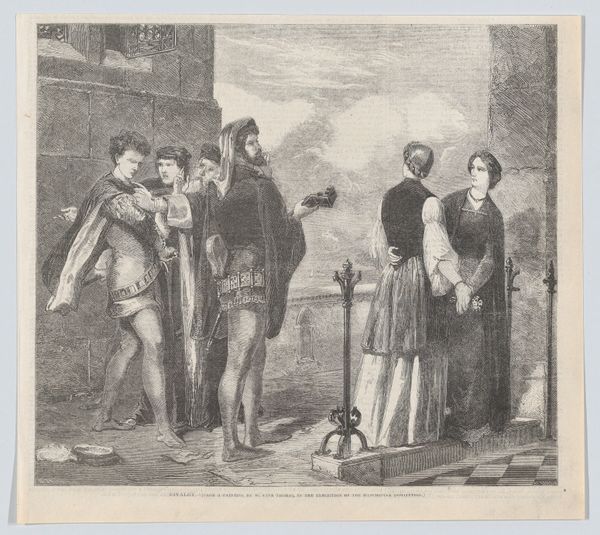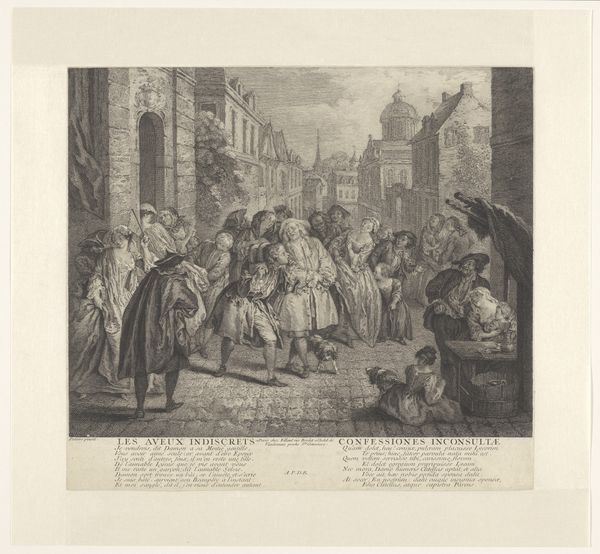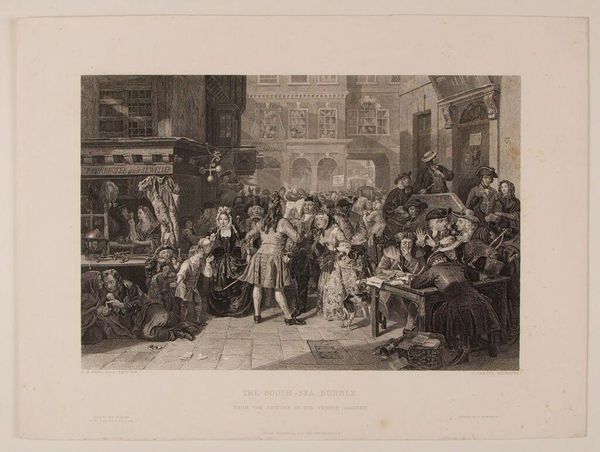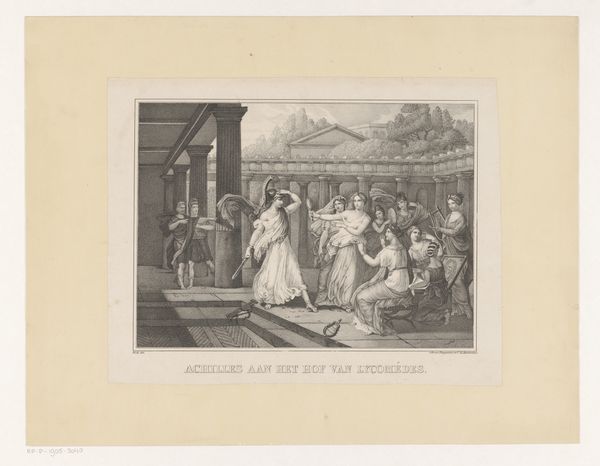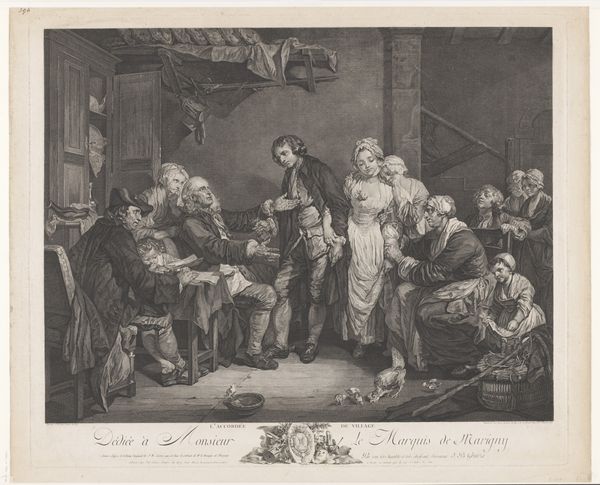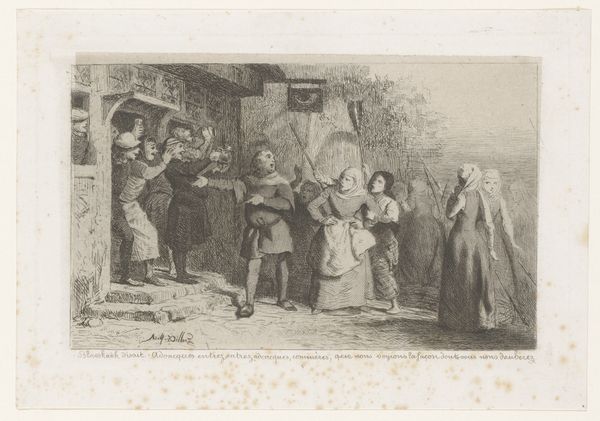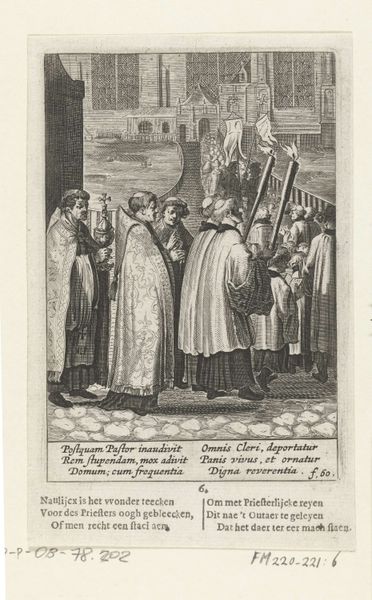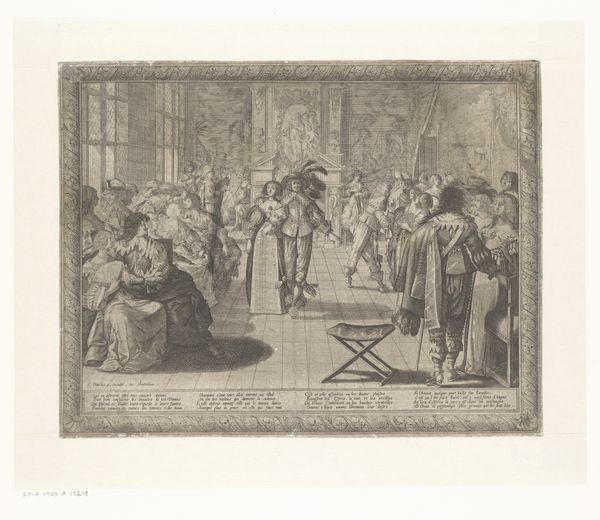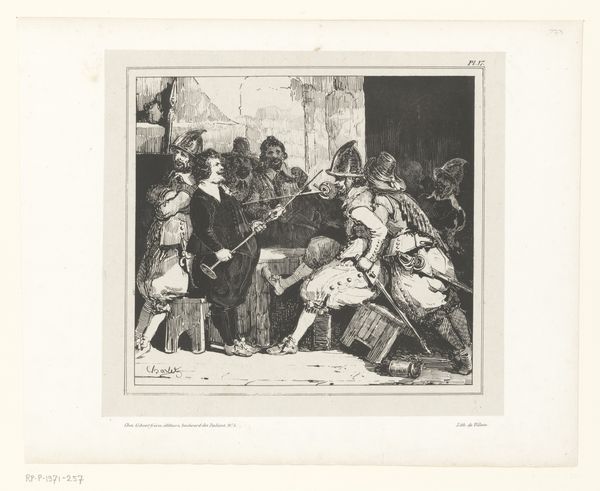
drawing, print, etching, paper
#
drawing
#
neoclacissism
#
narrative-art
# print
#
etching
#
paper
#
cityscape
#
genre-painting
Dimensions: 319 × 476 mm (image); 336 × 485 mm (sheet, cut within platemark)
Copyright: Public Domain
Editor: This is "At the Door of a Wealthy Home," made in 1805 by Louis Philibert Debucourt. It’s an etching and drawing, so a print on paper. There are so many people depicted here. I’m immediately struck by the contrast between the people at the front and the figures kind of crammed into the background. What do you make of it? Curator: This piece gives us a window into the social hierarchy of early 19th-century Paris. Consider the setting, a wealthy home. It isn’t just a building, it represents power, status, and exclusivity. What do you notice about how the artist differentiates the social classes within the composition? Editor: Well, the people in the foreground seem better dressed. There’s a clear sense of leisure and status, while those behind them seem more like onlookers, or perhaps they're just trying to get by. Curator: Exactly! Debucourt is using visual language to comment on the socio-political landscape. It is a genre painting showing a commonplace social setting. This work highlights the performative nature of wealth and the stark realities of urban life at that time. Note the presence of advertisements and news postings on the wall to the right. In this context, the public sphere intertwines with the private domain, creating a scene loaded with historical and political context. The museum, as a public institution, is of course part of that same discussion about the public role of art and shaping perception. Do you think museums are also active in establishing similar socio-political observations today? Editor: Definitely. The choices about which artworks are displayed and how they are presented inevitably reflect a certain viewpoint, even if unintentionally. I never really considered how that building's threshold shapes our reading of this social dynamic. Curator: Indeed, reflecting upon how art creates those dialogues across time, class, and power is central to its importance in the present day.
Comments
No comments
Be the first to comment and join the conversation on the ultimate creative platform.
